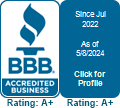We haven’t discussed the origins of IKEA with its founder, nor do we claim to be experts in the realm of do-it-yourself projects. But we do know one thing: DIY moves are more involved than hiring a moving company. That being said, there are certain rules of thumb you can follow to make the experience easier on yourself if you decide to go with a DIY move.
As it stands, DIY moves can be full of pitfalls, regardless of how much support you have. If your help is limited, or you’re on your own, it becomes even more challenging. Here are a few tips to help you navigate your next DIY move during each of its phases.

Tips for Phase 1: Planning
Developing a documented move strategy is wise in general, but it’s paramount for DIY moves. If you’re going to move everything yourself, it’s going to require some solid logistics. Here are the three main recommended areas to consider for your DIY move plan:
- Schedule: When are you looking to move? Are you flexible with the days or time of year? Are you more concerned about moving when it’s not as busy, or are you simply interested in moving as quickly as possible? Frame your plan around this timeline.
- Budget: Are you strictly limited to a DIY move, or can you afford help with packing, unpacking, loading or unloading? Your budget, as well as needs, will also dictate whether you should pursue a truck rental, a portable storage container or full-service moving company.
- Belongings: How much you’re moving will impact all phases of your DIY move. Consider downsizing what you can by trashing, donating or selling what you don’t need. The less you have to move, the lower the cost will be (both in actual time and money spent). Plus, it may allow your budget to go further.
Tips for Phase 2: Implementation
If you’re renting a truck, you have a very limited window of time when you have to complete the move. There is more pressure involved with truck rentals, unlike portable storage containers, which let you use them for as long as you want. At SAM (Store & Move), for example, we deliver the container to your location, you load it up on your timeline and just give us a call when you’re done for pickup and redelivery (to a storage facility or your new location). This is a form of DIY move that balances your need for safe storage and transportation and can replace the need for a moving truck entirely.
As for implementing your plan, consider using a checklist and follow the schedule and phases you documented. Remember that one of the biggest obstacles for DIY moves is losing motivation, so start early, be intentional with the steps you’re completing and play your favorite music or do what you need to keep the energy level up and make progress.
Tips for Phase 3: Aftermath
Finally, one thing that separates the professionals from the amateurs (especially with moving and storage) is attention to detail. Before you leave your old residence, follow up with a final walkthrough to identify any items or areas you may have missed. Double check with all utility companies, even those you think you already switched to the new address. Finally, do a final check with neighbors and close friends or family for copies of keys and sensitive info.
If you’re interested in more DIY move tips, contact us at 972-GET-A-SAM and we’ll get your questions answered or provide a no-obligation quote.
